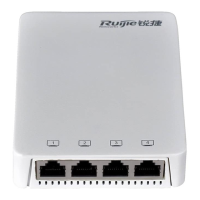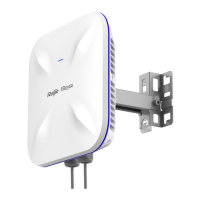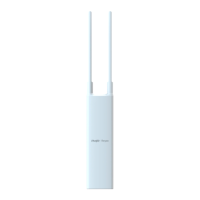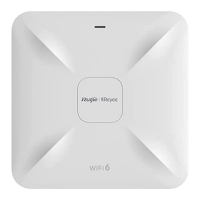Configuration Guide Configuring IGMP Snooping
10.3.3 IGMP Querier
On a network with a Layer-3 multicast device, the Layer-3 multicast device acts as an IGMP querier. In this case, a Layer-2
device needs only to listen to IGMP packets to establish and maintain the forwarding entry, realizing Layer-2 multicast.
On a network without a Layer-3 multicast device, the Layer-2 multicast device must be configured with the IGMP querier
function so that the device can listen to IGMP packets. In this case, a Layer-2 device needs to act as an IGMP querier as well
as listen to IGMP packets to establish and maintain the forwarding entry to realize Layer-2 multicast.
Working Principle
A Layer-2 device acts as an IGMP querier to periodically send IGMP Query packets, listen to and maintain the IGMP Report
packets replied by a user, and create a Layer-2 multicast forwarding entry. You can adjust relevant parameters of the Query
packets sent by the IGMP querier through configuration.
When the device receives a Protocol-Independent Multicast (PIM) or Distance Vector Multicast Routing Protocol (DVMRP)
packet, it considers that a multicast router, which will act as an IGMP querier, exists on the network and disables the querier
function. In this way, IGMP routing will not be affected.
When the device receives the IGMP Query packets from other devices, it will compete the IGMP querier with other devices.
Enabling the Querier Function
You can enable the querier for a specific VLAN or all VLANs.
Only when the global querier function is enabled can the queriers for specific VLANs take effect.
Specifying the IGMP Version for a Querier
The version of IGMP used for sending Query packets can be configured as IGMPv1 or IGMPv2.
Configuring the Source IP Address of a Querier
You can configure the source IP address of a query packet sent by the querier based on VLANs.
When the source IP address of the querier is not configured, the querier will not take effect.
Configuring the Query Interval of a Querier
You can configure the intervals for sending global Query packets based on different queriers on different VLANs.
Configuring the Maximum Response Time of a Query Packet
You can configure the maximum response time carried by a Query packet that is sent by a querier. As IGMPv1 does not
support the carrying of maximum response time by a Query packet, this configuration does not take effect when the querier is
running IGMPv1. You can configure different maximum response time for queriers on different VLANs.
Configuring the Aging Time of a Querier
When other IGMP queriers exist on a network, the existing device will compete with other queriers. If the existing device fails
to be elected and is in the non-querier state, the aging timer of a querier will be enabled. After the timer expires, other
queriers on the network are considered as expired and the existing device will be resumed as the querier.

